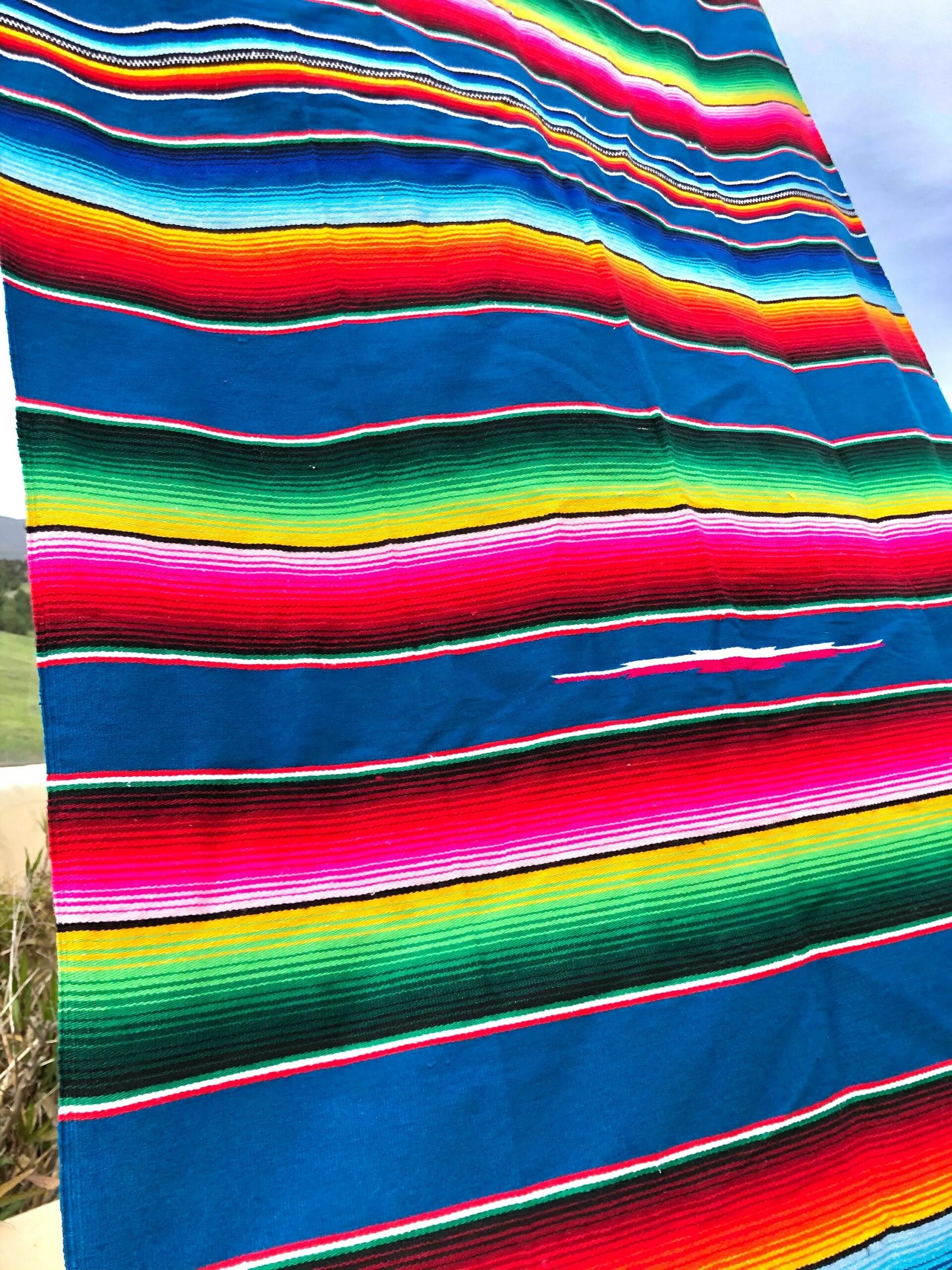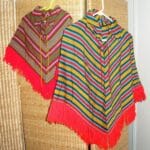A Colorful Journey: Unraveling the History of the Serape
The sarape blanket. More than just a cozy cover, it’s a vibrant thread woven through Mexican history, whispering tales of shepherds in the Sierra Madre mountains, shielded from the elements by these thick, colorful textiles. Born from necessity, the sarape evolved into an iconic symbol of Mexican heritage and artistry. Over generations, it transformed from a practical garment into a wearable work of art, each region developing its unique patterns and palette, reflecting local traditions and stories. Explore further by delving into the thrilling world of predator-prey relationships in tropical rainforests and uncover the intricate web of life within vibrant ecosystems.
The Art of the Weave: From Sheep to Symbol
Authenticity lies at the heart of a true sarape. Traditionally crafted on backstrap looms, each thread is meticulously interlaced by skilled artisans, creating intricate designs. Wool, prized for its warmth and durability, remains the classic material. Modern adaptations may incorporate softer materials like acrylic or cotton blends for easier care. Hand-knotted fringes are a hallmark of genuine craftsmanship, a testament to the weaver’s dedication.
A Tapestry of Regions: Exploring Design & Color
Like regional dialects, sarape designs vary across Mexico. From the vibrant hues of Oaxaca to the earthy tones of Saltillo, each area boasts a signature style, often reflecting local traditions and available natural dyes. The iconic Saltillo sarape, recognizable by its intricate diamond patterns in finely spun wool, stands in contrast to the tighter weaves and bolder motifs of Coahuila. Choosing a sarape is akin to selecting a favorite song—each resonates with a different part of you.
Beyond the Bedspread: Styling Your Serape
A sarape’s versatility extends far beyond its traditional use. Drape it over your sofa for a touch of Southwestern charm, hang it as a striking tapestry, or wrap yourself in its warmth. Consider using it as a picnic blanket, yoga mat, or a stylish shawl. With a little creativity, upcycle an older sarape into unique cushion covers, tote bags, or clothing accents, giving new life to a timeless piece and adding a personal touch.
Preserving History: Caring for Your Sarape
A handwoven sarape is an investment, deserving of special care. Regular airing and shaking will often suffice for maintenance. For deeper cleaning, always consult care instructions specific to the material. Avoid harsh chemicals and machine washing, especially for delicate wool. Opt for gentle handwashing or professional cleaning. Store your sarape away from direct sunlight and dampness, folded or rolled to maintain its shape.
The Hunt for Authenticity: Where to Buy
Embarking on your sarape quest? Explore online marketplaces like Etsy and eBay, carefully checking seller ratings and product descriptions. Look for specialists in handcrafted goods with detailed images and descriptions. For a more immersive experience, visit local artisan shops or travel to Mexico, connecting directly with the artisans and guaranteeing authenticity. This supports the craftspeople and their legacy of weaving stories into these beautiful textiles.
| Feature | Authentic Sarape | Mass-Produced Sarape |
|---|---|---|
| Material | Primarily wool; sometimes silk | Often acrylic or cotton blends |
| Weaving | Handwoven | Machine-woven |
| Fringes | Hand-knotted | Machine-stitched |
| Colors | Rich, often natural dyes | Brighter, potentially less nuanced |
| Price | Higher | More affordable |
| Feel | Denser, more textured | Softer, smoother |
| Overall Impression | Unique, imbued with character | Uniform, potentially lacking distinct character |
What is a Serape Blanket? History, Styles & How to Use Them
A serape blanket is a vibrant woven artwork, deeply rooted in Mexican culture. Originally essential for warmth and protection, especially in mountainous regions, these blankets evolved into cherished symbols of heritage and artistic expression. Skilled artisans, often using techniques passed down through generations, weave these intricate textiles on backstrap looms, primarily using wool. Hand-knotted fringes are a hallmark of authenticity.
While the classic image is a rectangular blanket, the term “serape” also includes poncho-like garments called gabán and jorongo, reflecting Mexico’s equestrian culture. Today, serapes have transcended their practical origins, adding a touch of handcrafted charm to homes and wardrobes. They’ve become versatile pieces of art, seen as throws, wall hangings, scarves, shawls, and even incorporated into modern clothing designs.
When searching for an authentic serape, look for natural materials, handwoven texture, and hand-knotted fringes. Ethically sourced serapes support artisans preserving this centuries-old tradition. Researchers are even exploring regional design and color variations, suggesting there’s still much to uncover about this rich textile tradition.
Beyond the Basics: Understanding the Cultural Significance of Serape Blankets
The sarape is more than just a blanket; it’s a symbol of Mexican national pride, woven through the tapestry of the nation’s history. Its story is one of indigenous traditions blending with colonial influences, evolving into a powerful expression of Mexican identity.
Originating in pre-colonial Mexico, specifically the Tlaxcala region, the serape likely served practical purposes, offering warmth in cooler climates. With the arrival of the Spanish, indigenous weaving techniques intertwined with European aesthetics, resulting in the sarape we recognize today. It spread across Mexico, adapting to different regions and incorporating local motifs. Teocaltiche, Jalisco, became a major production hub.
While commonly seen as a fringed rectangular blanket, the term now includes poncho-style garments like the gabán and jorongo. The vibrant colors and intricate designs are not merely decorative; they’re a visual language communicating regional pride and cultural identity. The sarape became a strong symbol of Mexican national identity, particularly for men, representing craftsmanship and a tangible link to the nation’s rich history.
The sarape’s influence reached Guatemala, where it adapted for the tourist market with Maya-inspired designs, although not typically worn by Maya highland communities. Ongoing research continually reveals new insights into the sarape’s origins, production methods, and cultural significance.
| Feature | Mexican Sarape | Guatemalan Sarape |
|---|---|---|
| Primary Use | Everyday, ceremonial, symbolic | Primarily tourist souvenir |
| Design Influences | Indigenous Mexican, Spanish Colonial | Indigenous Maya, adapted for tourism |
| Cultural Significance | Strong symbol of Mexican national identity | Less culturally significant within Guatemala |
| Materials | Wool, sometimes cotton or silk | Often synthetic materials |
Shawl vs. Serape: Unraveling the Key Differences & Cultural Significance
Understanding the difference between a shawl and a serape can be tricky. Think of “shawl” as a broad category, like “fruit,” encompassing many varieties. A serape is a specific type within that category, like a “mango.” All serapes are shawls, but not all shawls are serapes.
Shawls are pieces of fabric draped over the body, varying in size, material, and purpose, from warmth to fashion or religious significance. Serapes, on the other hand, are larger, bolder, and bursting with color, often featuring vibrant stripes, intricate patterns, and fringes. Rooted in Mexican heritage, they traditionally served both practical and symbolic purposes, especially for men.
Key differences include size (serapes are larger and more blanket-like), origin (serapes are specifically Mexican), and cultural weight (serapes carry a rich history and tradition).
| Feature | Shawl | Serape |
|---|---|---|
| Definition | Fabric draped over the body | Large, blanket-like shawl of Mexican origin |
| Origin | Various cultures | Mexico |
| Size | Varied | Larger, often nearly square |
| Appearance | Diverse styles | Brightly colored, fringed, patterned |
| Cultural Significance | Varies by culture | Symbol of Mexican heritage |
The serape’s journey is fascinating, evolving from a practical garment to a symbol of Mexican identity and a fashionable accessory. Ongoing research continues to uncover new details about its evolution, reminding us that there’s always more to discover.
- China II Review: Delicious Food & Speedy Service - April 17, 2025
- Understand Virginia’s Flag: History & Debate - April 17, 2025
- Explore Long Island’s Map: Unique Regions & Insights - April 17, 2025

















1 thought on “The Ultimate Guide to Sarape Blankets: History, Styles & Where to Buy Authentic Pieces”
Comments are closed.